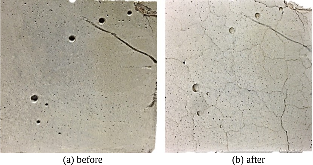Waterless fracturing technologies for unconventional reservoirs-opportunities for liquid nitrogen
- Colorado School of Mines, Golden, CO (United States)
- Texas A & M Univ., College Station, TX (United States)
- King Abdulaziz City for Science and Technology, Riyadh (Saudi Arabia)
- Colorado School of Mines, Golden, CO (United States); Devon Energy, Oklahoma City, OK (United States)
- Lawrence Berkeley National Lab. (LBNL), Berkeley, CA (United States)
During the past two decades, hydraulic fracturing has significantly improved oil and gas production from shale and tight sandstone reservoirs in the United States and elsewhere. Considering formation damage, water consumption, and environmental impacts associated with water-based fracturing fluids, efforts have been devoted to developing waterless fracturing technologies because of their potential to alleviate these issues. Herein, key theories and features of waterless fracturing technologies, including Oil-based and CO2 energized oil fracturing, explosive and propellant fracturing, gelled LPG and alcohol fracturing, gas fracturing, CO2 fracturing, and cryogenic fracturing, are reviewed. We then experimentally elaborate on the efficacy of liquid nitrogen in enhancing fracture initiation and propagation in concrete samples, and shale and sandstone reservoir rocks. In our laboratory study, cryogenic fractures generated were qualitatively and quantitatively characterized by pressure decay tests, acoustic measurements, gas fracturing, and CT scans. The capacity and applicability of cryogenic fracturing using liquid nitrogen are demonstrated and examined. Furthermore, by properly formulating the technical procedures for field implementation, cryogenic fracturing using liquid nitrogen could be an advantageous option for fracturing unconventional reservoirs.
- Research Organization:
- Lawrence Berkeley National Laboratory (LBNL), Berkeley, CA (United States)
- Sponsoring Organization:
- USDOE Office of Science (SC)
- Grant/Contract Number:
- AC02-05CH11231; 10122-20
- OSTI ID:
- 1532198
- Alternate ID(s):
- OSTI ID: 1359382
- Journal Information:
- Journal of Natural Gas Science and Engineering, Vol. 35, Issue PA; ISSN 1875-5100
- Publisher:
- ElsevierCopyright Statement
- Country of Publication:
- United States
- Language:
- English
Web of Science
Similar Records
Using Natural Gas Liquids to Recover Unconventional Oil and Gas Resources (Final Report)
Cryogenic Fracturing of Wellbores Under True Triaxial-Confining Stresses: Experimental Investigation

















